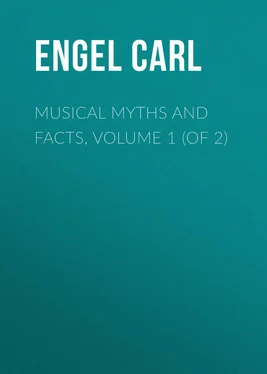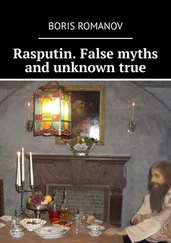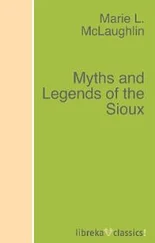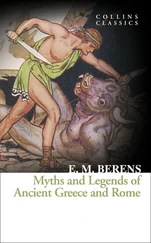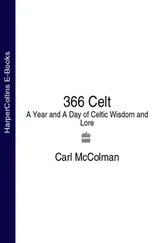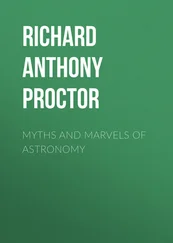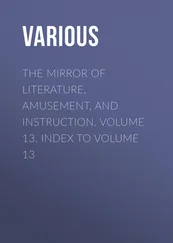Carl Engel - Musical Myths and Facts, Volume 1 (of 2)
Здесь есть возможность читать онлайн «Carl Engel - Musical Myths and Facts, Volume 1 (of 2)» — ознакомительный отрывок электронной книги совершенно бесплатно, а после прочтения отрывка купить полную версию. В некоторых случаях можно слушать аудио, скачать через торрент в формате fb2 и присутствует краткое содержание. Жанр: music_dancing, foreign_antique, foreign_prose, на английском языке. Описание произведения, (предисловие) а так же отзывы посетителей доступны на портале библиотеки ЛибКат.
- Название:Musical Myths and Facts, Volume 1 (of 2)
- Автор:
- Жанр:
- Год:неизвестен
- ISBN:нет данных
- Рейтинг книги:5 / 5. Голосов: 1
-
Избранное:Добавить в избранное
- Отзывы:
-
Ваша оценка:
- 100
- 1
- 2
- 3
- 4
- 5
Musical Myths and Facts, Volume 1 (of 2): краткое содержание, описание и аннотация
Предлагаем к чтению аннотацию, описание, краткое содержание или предисловие (зависит от того, что написал сам автор книги «Musical Myths and Facts, Volume 1 (of 2)»). Если вы не нашли необходимую информацию о книге — напишите в комментариях, мы постараемся отыскать её.
Musical Myths and Facts, Volume 1 (of 2) — читать онлайн ознакомительный отрывок
Ниже представлен текст книги, разбитый по страницам. Система сохранения места последней прочитанной страницы, позволяет с удобством читать онлайн бесплатно книгу «Musical Myths and Facts, Volume 1 (of 2)», без необходимости каждый раз заново искать на чём Вы остановились. Поставьте закладку, и сможете в любой момент перейти на страницу, на которой закончили чтение.
Интервал:
Закладка:
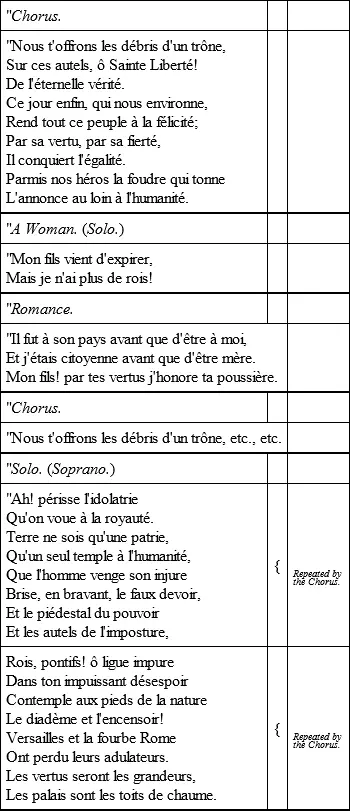
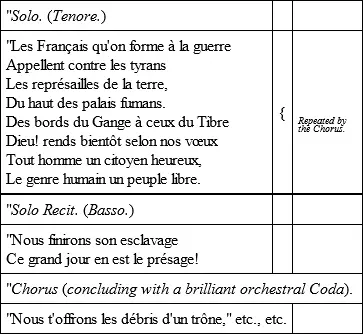
This curious composition was performed in the Cathedral of Strassburg, and created great sensation. Everyone declared that only an ardent patriot could have produced such a stirring work. Nevertheless Pleyel, after having been set free, thought it advisable to leave Strassburg for London as soon as possible.
Besides those already mentioned, several other distinguished musicians could be named who were born or who lived in Strassburg. Ottomarus Luscinius, a priest, whose proper German name was Nachtigall, published in the year 1536, in Strassburg, his 'Musurgia, seu Praxis Musicæ,' a work much coveted by musical antiquarians. Sebastian Brossard, who, about the year 1700, was Kapellmeister at the Strassburg Cathedral, is the author of a well-known musical dictionary. Sebastian Erard, the inventor of the repetition-action and other improvements in the pianoforte, as well as of the double-action in the harp, was born at Strassburg in the year 1752.
In short, Elsass-Lothringen has been the cradle of many men distinguished in arts and sciences. The prominent feature of the national character of the inhabitants, revealed in their popular songs and usages, is a staidness which is not conspicuous among the pleasant qualities of the French. This innate staidness accounts for the reluctance recently shown by them to being separated from France, just as it accounts for their former disinclination to become French subjects. Moreover it will probably, now that they are reunited to their kinsmen, gradually make them as patriotic Germans as they originally were. That they require time to transfer their attachment redounds to their honour.
MUSIC AND ETHNOLOGY
The following scheme devised for obtaining accurate information respecting the music of different nations is probably without precedent.
In the year 1874 the British Association for the Advancement of Science resolved to issue a book of instructions for the guidance of travellers and residents in uncivilized countries, to enable them to collect such information as might be of use to those who make special study of the various subjects enumerated in the book. 3 3 'Notes and Queries on Anthropology, for the Use of Travellers and Residents in Uncivilized Lands. Drawn up by a Committee appointed by the British Association for the Advancement of Science. London, 1874.'
The subjects relate to manners and customs, arts, sciences, religion, war, social life, – in fact, to everything which throws light upon the stage of civilization attained by the people, and which the ethnologist may desire to ascertain. The book is for this purpose divided into a number of sections, each on a certain subject, on which it contains a number of questions. These are preceded by a short note explanatory of the subject. In order to render the questions as effective as possible, especial care has been taken that they should enter into all necessary details. 4 4 The book contains the note: "The Council of the Anthropological Institute of Great Britain and Ireland will be glad to receive any communications relating to the queries contained in this volume. Communications to be addressed to the Secretary, 4, St. Martin's Place, Trafalgar Square, London." It is understood that a certain number of copies of the book will be gratuitously distributed by the committee to English consular agents, naval officers, missionaries, and others who are likely to turn them to good account.
Having been requested to undertake the section headed "Music," and to draw up a list of numbered questions in accordance with the plan adopted by the committee, I have endeavoured to direct the attention of those for whom the book is intended to the musical investigations which, in my opinion, are especially desirable; and I have occasionally interspersed among the questions a hint which may assist the investigator. It appeared to me unnecessary to give definitions of musical terms made use of in the questions – such as interval , melody , harmony , etc. – which are to be found in every dictionary of the English language. Some terms, however, required an explanation to render them fully intelligible to those travellers who are but little acquainted with music. Of this kind are, for instance, the names of the different musical scales. The English missionaries, traders, merchants, consuls, and other residents in foreign countries, seldom possess any available knowledge of music. Still, among the questions here submitted to them are many which they may be able to answer satisfactorily; while, on the other hand, it must be admitted, not a few can be properly replied to only by men of musical education and experience. However, what one person is unable to investigate another may do; and thus, perhaps, we may hope, in the course of time, to be supplied with reliable and instructive answers to most of the questions from different parts of the world.
Some of the questions may appear, at a first glance, to be of but little importance; it is, however, just those facts to which they refer which ought to be clearly ascertained before we can expect to discern exactly the characteristics of the music of a nation or tribe.
It will be observed that certain questions pre-suppose a somewhat advanced state of civilization – as, for instance, those referring to musical notation, instruction, literature, etc. There are several extra-European nations – as the Japanese, Chinese, Hindus, etc. – which have advanced so far in the cultivation of music as to render these questions necessary; and it would be very desirable to possess more detailed information concerning the method pursued by these nations in the cultivation of the art than is at present available.
The present scheme is quite as interesting to the musician, or even more so, than it is to the ethnologist. Professional musicians in general are, however, not likely to become acquainted with the instructions for musical researches published together with various other scientific inquiries by the British Association. It is for this reason that they are here inserted, since the present work has a better chance of coming into the hands of professional musicians than the anthropological publication. Howbeit, years must elapse before it leads to a practical result. The originator of the questions may never enjoy the advantage of receiving the answers; but he has, at least, the pleasure of preparing the way for an accumulation of well-ascertained facts which intelligent musicians of a future generation will know how to turn to good account.
"The music of every nation has certain characteristics of its own. The progressions of intervals, the modulations, embellishments, rhythmical effects, etc., occurring in the music of extra-European nations, are not unfrequently too peculiar to be accurately indicated by means of our musical notation. Some additional explanation is, therefore, required with the notation. In writing down the popular tunes of foreign countries, on hearing them sung or played by the natives, no attempt should be made to rectify anything which may appear incorrect to the European ear. The more faithfully the apparent defects are preserved the more valuable is the notation. Collections of popular tunes (with the words of the airs) are very desirable. Likewise, drawings of musical instruments with explanations respecting the construction, dimensions, capabilities, and employment of the instruments represented.
Читать дальшеИнтервал:
Закладка:
Похожие книги на «Musical Myths and Facts, Volume 1 (of 2)»
Представляем Вашему вниманию похожие книги на «Musical Myths and Facts, Volume 1 (of 2)» списком для выбора. Мы отобрали схожую по названию и смыслу литературу в надежде предоставить читателям больше вариантов отыскать новые, интересные, ещё непрочитанные произведения.
Обсуждение, отзывы о книге «Musical Myths and Facts, Volume 1 (of 2)» и просто собственные мнения читателей. Оставьте ваши комментарии, напишите, что Вы думаете о произведении, его смысле или главных героях. Укажите что конкретно понравилось, а что нет, и почему Вы так считаете.
